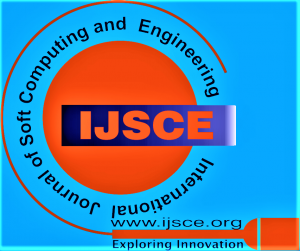![]()
An Integrated Paradigm for Advanced Irrigation Systems Leveraging Internet of Things (IoT)
Attel Manjunath1, Manjunatha K N2, Poorvi Srinivas3, Prashanth Kumar4, Harshitha J5
1Dr. Attel Manjunath, Department of Mechatronics Engineering, Acharya Institute of Technology, Bengaluru (Karnataka), India.
2Dr. Manjunatha K N, Department of Mechatronics Engineering, Acharya Institute of Technology, Bengaluru (Karnataka), India.
3Poorvi Srinivas, Department of Mechatronics Engineering, Acharya Institute of Technology, Bengaluru (Karnataka), India.
4Prashanth Kumar, Department of Mechatronics Engineering, Acharya Institute of Technology, Bengaluru (Karnataka), India.
5Harshitha J, Department of Mechatronics Engineering, Acharya Institute of Technology, Bengaluru, India.
Manuscript received on 24 October 2024 | First Revised Manuscript received on 19 November 2024 | Second Revised Manuscript received on 04 December 2024 | Manuscript Accepted on 15 January 2025 | Manuscript published on 30 January 2025 | PP: 12-18 | Volume-14 Issue-6, January 2025 | Retrieval Number: 100.1/ijsce.F365414060124 | DOI: 10.35940/ijsce.F3654.14060125
Open Access | Editorial and Publishing Policies | Cite | Zenodo | OJS | Indexing and Abstracting
© The Authors. Blue Eyes Intelligence Engineering and Sciences Publication (BEIESP). This is an open access article under the CC-BY-NC-ND license (http://creativecommons.org/licenses/by-nc-nd/4.0/)
Abstract: As the demand for precision in agriculture and effective, sustainable resource management increases, there has been a lot of pressure to have more accurate and efficient soil moisture data-transmission systems. This paper presents a discussion on how machine learning (ML) and deep learning (DL) techniques can be further improved to enhance accuracy and performance in IoT-based innovative irrigation systems. The system is based on the perception of soil moisture using IoT sensors that collect real-time environmental data in fields, including soil moisture, temperature, humidity, and sunlight, which are transmitted to farmers or end-users via the ThingSpeak and Thinger.io platforms for analysis, storage, and visualisation. It enables real-time decision-making and remote control of agricultural systems using web pages or mobile applications. Wireless Sensor Networks (WSNs) facilitate the automation of irrigation and water management in agricultural settings. The developed SIS (Smart Irrigation Systems) is based on a sensor network that carries real-time information relating to moisture content in the soil, temperature, and humidity levels, which are critical determinants of the proper irrigation schedule. These are analyzed every 15 minutes at the edge server. The system utilises deep learning models to predict when soil moisture levels fall below a threshold, automatically activating water pumps or sprinklers, thereby reducing human intervention and optimising water usage in agriculture. A crucial aspect of research involves developing machine learning algorithms to enhance performance. The recent advancements rely on several models, among them KNN (K-Nearest Neighbours) and TimeGPT models [TimeGPT is a time-series forecasting model that utilizes the power of GPT (Generative Pre-trained Transformer) architecture to predict future values in a sequence.], in the prediction of soil moisture while achieving optimal irrigation schedules from previous available data and weather forecasting. The comparative analyses yielded an accuracy rate of 97% to 98% in KNN, indicating a high level of accuracy that the system can attain regarding soil conditions and water requirements. This research offers the potential to integrate IoT into machine learning, potentially forming a new era of innovative agriculture systems that, in addition to irrigation automation, enhance decision-making in farming practices. The adoption of such systems could significantly contribute to the sustainability of these agricultural practices, primarily due to reduced water wastage, lower operational costs, and improved crop yields. Integrating real-time environmental data and predictive analytics can optimise and maintain farmlands, even in areas with water scarcity or challenging rainfall conditions.
Keywords: Arduino Mega, Bluetooth Module, Foundation models, Fertilizers, Forecasting, Humidity, IoT (Internet of Things), Microcontroller, Machine Learning Model, Prediction, Sensors, Soil moisture, Solar Panel Time-series, Smart Agriculture, Soil Water Potential, Temperature.
Scope of the Article: Internet of Things (IoT)
